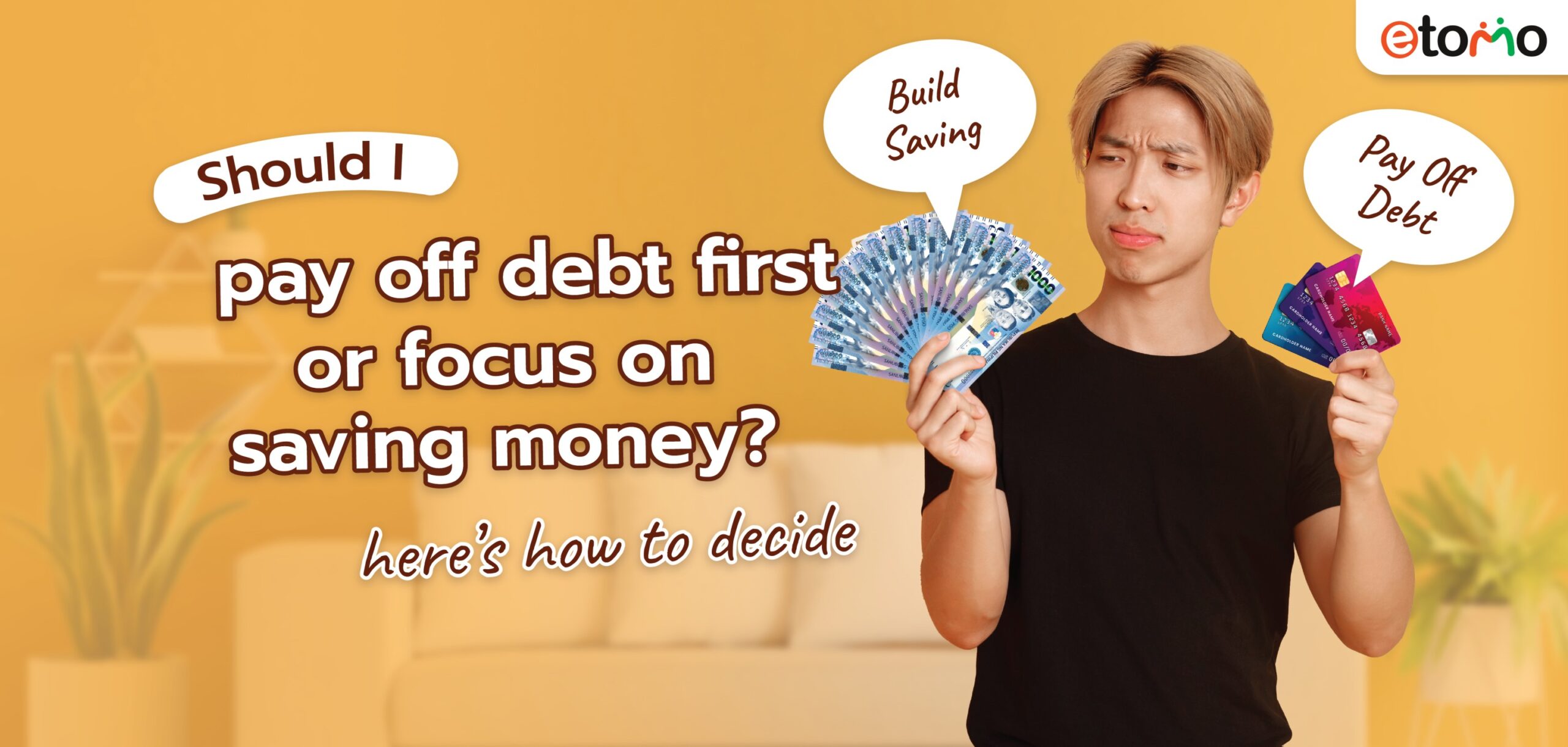When you’re trying to get your finances in order, one question always seems to pop up: Should I pay off debt first or focus on saving money? The truth is, there’s no one-size-fits-all answer. The right choice depends on your financial situation, goals, and the kind of debt you have.
Both saving and paying off debt are important. But if you try to do everything at once without a strategy, you might feel like you’re going nowhere. The key is to prioritize smartly, so you build financial stability without feeling stuck.
Let’s break it down step-by-step so you can make the best decision for you.
Step 1: Start with an emergency fund
Before anything else, you should have a starter emergency fund—even if you have debt.
- Goal: PHP 50,000–100,000 (or 1-3 month of expenses)
- Why? This helps you avoid relying on credit cards or loans for unexpected costs like a medical bill, car repair, or sudden job loss.
Think of it as your financial safety net. It keeps you from falling deeper into debt when life throws surprises.
Step 2: Understand your debt type
Not all debts are equal. Some are more urgent to pay off than others.
Bad debt (high priority)
- Credit cards with high interest (20%+)
- Personal loans with high interest
- Payday loans
These are expensive and should be paid off quickly because the interest eats your money fast.
Good or low-interest debt (lower priority)
- Student loans with low interest
- Home or car loans
- Business loans with good ROI
These can be paid off more slowly, while you also save money for goals or emergencies.
Step 3: Compare interest rates vs. savings growth
Here’s a simple rule:
- If your debt interest rate is higher than your savings interest rate, prioritize debt.
- If your savings grow faster than your debt interest, prioritize saving.
In most cases, credit card debt (20%+) grows faster than savings (1–3%), so it’s smarter to focus on paying off the debt.
Step 4: Use the “50/30/20” rule
If your income allows, try this:
- 50% for needs (rent, bills, food)
- 30% for wants (entertainment, lifestyle)
- 20% for financial goals
From the 20%:
- Use half for saving, half for debt repayment
- Once your emergency fund is ready, you can shift more toward debt or saving for big goals
Step 5: Set milestones and reevaluate
Your plan doesn’t have to be all-or-nothing. It can evolve.
- Step 1: Save PHP 50,00-100,000 emergency fund
- Step 2: Pay off high-interest debt
- Step 3: Build a 3–6 month emergency fund
- Step 4: Start saving for long-term goals (house, investments, etc.)
Check in with yourself every few months and adjust based on your progress.
The Best of both worlds: a balanced approach
If you feel stuck choosing, a hybrid strategy can work:
- Make minimum payments on all debt
- Put a small amount into savings (e.g. PHP 1,000/month)
- Throw extra cash at your highest-interest debt
- Celebrate milestones, like your first PHP 50,000 saved or a credit card fully paid off
This way, you’re making progress on both sides without losing momentum or motivation.
The right path isn’t always clear-cut—but here’s a good mindset:
“Save for safety. Pay debt for freedom.”Start small, stay consistent, and choose what gives you the most peace of mind right now. Whether you save, pay off debt, or both, the most important thing is that you’re moving forward.






